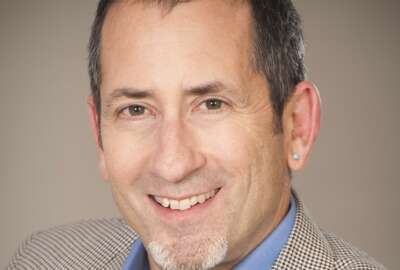
Is phased retirement starting to take off?
The Office of Personnel Management is receiving more applications for the phased retirement program this year than it had during the first full year of its...
About five years after Congress first approved the program, nearly 300 federal employees have applied for phased retirement and nearly 80 others have opted in, completed the mentoring requirements and retired from their agencies.
According to OPM’s latest count, 252 federal employees have applied for phased retirement at the time of Federal News Radio’s June 27 request. That’s well above the 90 federal employees who had applied for phased retirement as of August 2016.
Among the 252 who have applied, 117 are Civil Service Retirement System participants and 135 are within the Federal Employee Retirement System.
Another 79 people have applied for the program and are now retired, according to OPM.
The numbers are certainly higher than the 90 applications OPM had received nearly one year ago. But uptake for the program has been largely sluggish, given the vast number of federal employees who are or will soon be eligible to retire — as much as 31 percent of the federal workforce by September 2017, according to the Government Accountability Office.
Both NASA and the Environmental Protection Agency have seen the most continued interest in the program. But the departments of Agriculture, Commerce and Interior, along with the Smithsonian Institution, have also seen stronger interest within the past year.
Some agencies, such as the Veterans Affairs Department and IRS, appear to have started using the program within the past year.
TOTALS
| Phased Retirement Totals (as of June 27, 2017) | ||||||||
| AGENCIES | Total Phased Retirements | Composite Retirements | ||||||
| Agriculture | 24 | 6 | ||||||
| Commerce | 28 | 1 | ||||||
| Defense | 2 | 1 | ||||||
| Energy | 11 | 4 | ||||||
| Environmental Protection Agency | 32 | 13 | ||||||
| Housing and Urban Development | 8 | 2 | ||||||
| Interior | 24 | 5 | ||||||
| Justice | 6 | 3 | ||||||
| Labor | 4 | 1 | ||||||
| National Archives and Records Administration | 5 | 1 | ||||||
| NASA | 39 | 8 | ||||||
| Nuclear Regulatory Commission | 2 | 2 | ||||||
| National Science Foundation | 2 | n/a | ||||||
| Veterans Affairs | 5 | n/a | ||||||
| Broadcasting Board of Governors | 2 | 2 | ||||||
| Federal Communications Commission | 1 | n/a | ||||||
| IRS | 3 | n/a | ||||||
| Library of Congress | 19 | 15 | ||||||
| Smithsonian | 21 | 8 | ||||||
| Administrative Office of U.S. Courts | 11 | 7 | ||||||
| Bonneville Power Administration (Energy) | 3 | n/a | ||||||
Retirement-eligible federal employees who sign up for the program agree to work part-time in their positions while collecting half their salary and half their accumulated retirement annuity. Once approved, phased retirees must dedicate part of their working hours — 20 percent in some cases — to mentoring other employees who plan to take over their job responsibilities once they leave.
The numbers are also lower than the Congressional Budget Office’s original participation estimates. It projected 1,000 federal employees at any given time would enter into the phased retirement program per year, according to CBO’s 2012 score of the Federal Employee Phased Retirement Act.
Though OPM’s latest count shows more federal employees are opting into the program than before, the uptake is still disappointing for some federal employees groups who had worked on the authorizing legislation with some members of Congress.
The National Active and Retired Federal Employees Association said it still hears from members who ask when their agency will implement phased retirement.
“Some agencies still do not offer phased retirement, which is disappointing, particularly at a time when agencies have been asked to provide workforce reduction plans,” Jessica Klement, NARFE legislative director, said. “Highly-skilled and knowledgable employees will be retiring in likely record numbers in the coming years. To ensure continuity of operations and be responsible stewards of taxpayers dollars, phased retirement offers those employees a unique opportunity to pass on their expertise.”
In addition, CBO estimated agencies would save $427 million in direct spending and would increase revenues by $24 million between 2013-2022.
“Implementing [the Federal Employee Phased Retirement Act] would decrease employer contributions to retirement accounts, thus reducing discretionary spending for those activities; such reductions in spending would be subject to future appropriation actions consistent with the bill,” CBO said.
Yet the slow uptake isn’t surprising for the Senior Executives Association.
“While SEA supported the passage of phased retirement legislation and many of our members anticipated using it, more recently interest among our members has diminished significantly,” SEA Executive Director Jason Briefel said. “Phased retirement will continue to be a useful tool in agencies’ talent management toolkit that we hope more agencies and employees will take advantage of, circumstances permitting.”
One agency told SEA that the current program provides little flexibility. Because the ratio of work and retirement must be 50/50, phased retirees can’t work overtime to support increases in workload, nor can they easily cut back hours if workloads or priorities shift.
In addition, agencies can’t end a phased retiree’s position before the employee’s agreement ends — even if the organization’s needs change.
Congress passed legislation in 2012 authorizing the phased retirement program for federal employees. But final regulations didn’t come from OPM until 2014. Agencies got the green light in November 2014 that they could begin accepting applications for the program from their employees.
Individual agencies are responsible for issuing and implementing their own specific guidelines on phased retirement. But many agencies have been slow to unveil them, and some, like the Social Security Administration, have opted not offer the phased retirement to their employees.
The Defense Department offered more details about its phased retirement program last year. DoD components are opting to introduce phased retirement based on their own terms and mission needs.
Copyright © 2025 Federal News Network. All rights reserved. This website is not intended for users located within the European Economic Area.
Nicole Ogrysko is a reporter for Federal News Network focusing on the federal workforce and federal pay and benefits.
Follow @nogryskoWFED





